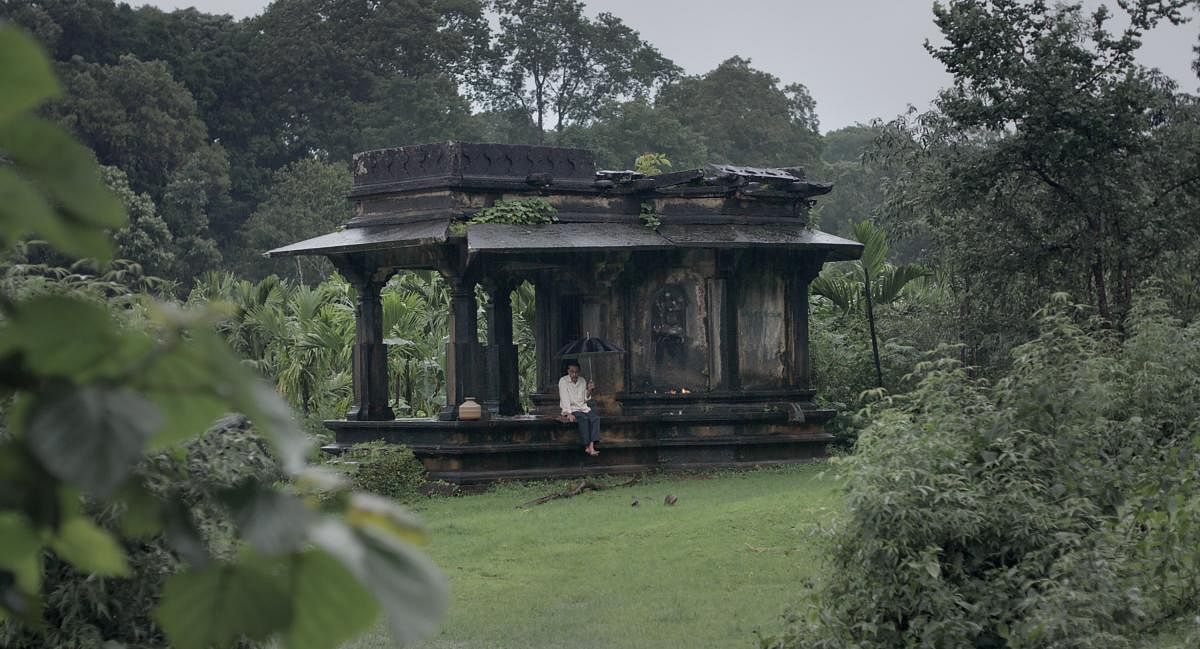
'Pedro', a Kannada cinema made by debutant director Natesh Hegde has won accolades across the globe, for direction and filmmaking. Bankrolled by actor and filmmaker Rishabh Shetty, the film has been in news for not getting chosen for Bengaluru International Film Festival.
I saw 'Pedro' at a private screening last week. What is unique about the movie is that it has used the sounds of nature in mise-en-scène — pronounced as meez-ahn-sen. A well-designed mise-en-scène enhances the mood for the viewer.
Mise-en-scène includes everything placed on the stage or in front of the camera — be it people or locations. A natural mise-en-scène is the key to a realistic experience and adds texture to the film. Some directors keep shooting till a particular happenstance improves the mise-en-scène.
In 'Pedro', sound adds a lot of texture to the film. Natesh and sound engineer Shreyank spoke to me about how they used sync sound to achieve this in the film. The main source for sound during synchronised recording is the location. Each kind of sound was captured using a different mike. For example, if two actors are driving a motorcycle, there could be three different mikes to capture the overall sound.
Getting sync sound right could be tricky sometimes. The actors could get their dialogues right but a mike could pick up unwanted ambient noises, like from a car. Depending on the extent of the noise, the entire scene will need to be shot again.
Deletion, modifications or enhancement of the sounds are completed at the postproduction stage.
"I plot sounds, camera angles and lighting when I write a film," says Natesh, "and wanted Shreyank to match the rhythm of the film using natural sounds.”
“Parts of the story happen outside the cinematic frame, therefore the need for sound to enhance emotions was very important," he adds. The subconscious mind wavers to the sound created by the character.
“As a team, we stuck to our plans on sound engineering. Yet, at the postproduction, we turned into mad scientists experimenting with different sounds. I found this very satisfying," Natesh explains.
Shreyank adds, "As a sound designer, you have to react to the rhythm of the film and create the rhythm at the same time. I picked and chose the aspects of the sound that needed highlighting. The fact that I was the production sound mixer and the post-production sound designer helped me handle things comprehensively.”
"Shooting outdoors was a challenge because rain can ruin expensive equipment. Apart from the tight budgets, this was a big challenge for me,” adds Shreyank.
Sheryank has worked on several mainstream Hindi films such as 'Article 15' and 'Kabir Singh'. The FTII alumnus has shifted his base to Bengaluru. He finds the working environment here a lot more supportive and relaxed.
'Pedro' scores well in several departments as a film. The sound design of this film is a great example to illustrate how natural sounds can be used to tell the story and highlight emotions.
(The writer is a Bengaluru-based management professional, interested in films, society and politics.)